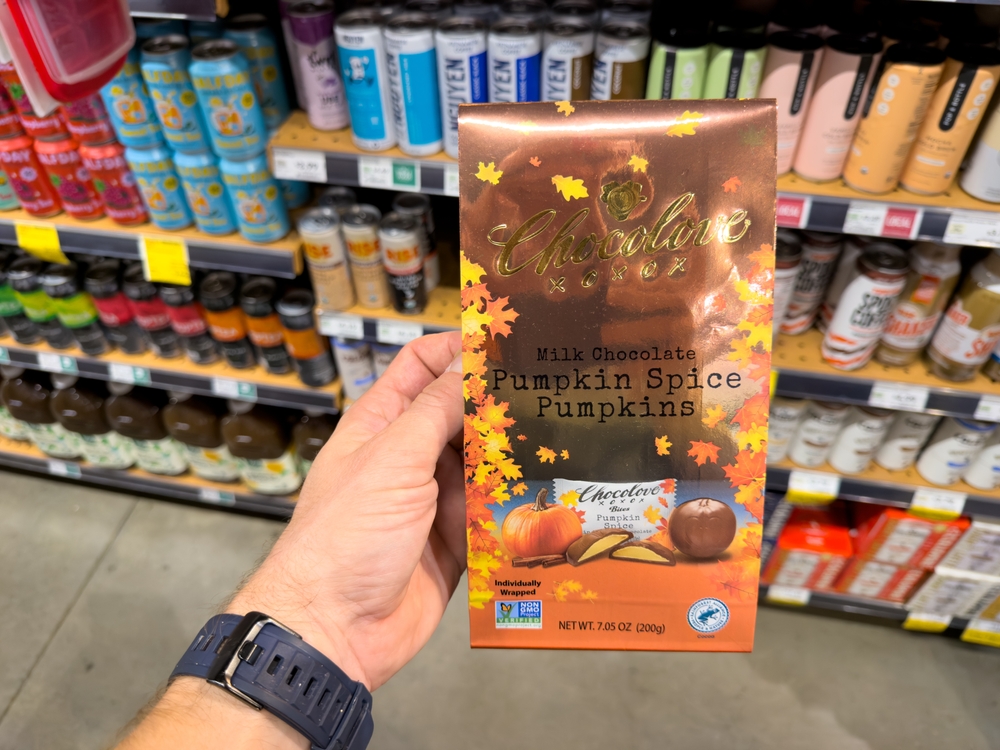
Every year, retailers roll out seasonal products that seem too tempting to resist: pumpkin spice in fall, peppermint everything in winter, and fruity flavors in summer. But behind the festive packaging often lies a sneaky pricing strategy: these items usually cost far more per ounce than their regular counterparts. Whether it’s nostalgia, limited-time marketing, or clever packaging, consumers routinely pay a premium for the same ingredients dressed in seasonal flair. Understanding which items inflate in cost helps you shop smarter year-round. Here are ten seasonal products that always cost more per ounce, and how to avoid overpaying.
1. Holiday-Flavored Coffee
Every fall and winter, coffee companies release limited-edition flavors like pumpkin spice, peppermint mocha, and gingerbread latte. These blends often come in smaller bags or pods, making them pricier per ounce than regular roasts. For example, a 10-ounce bag of pumpkin spice coffee can cost more than a 12-ounce bag of standard medium roast. The reason? Seasonal exclusivity drives impulse buying, and brands know customers will splurge to capture the holiday mood. The smart move is to buy plain coffee and add your own seasonal syrup or spices at home.
2. Valentine’s Day Chocolate Boxes
Romantic packaging and heart-shaped assortments come at a hefty markup. The same brand of chocolate sold in a standard box can jump in price once wrapped in red foil and labeled “Valentine’s Edition.” More recently, there have been higher chocolate prices due to worldwide shortages. Valentine’s Day 2025 saw a price increase of 8.3% because of those shortages. Manufacturers also reduce the product weight while keeping prices high to create the illusion of value. Consumers end up paying more for presentation than actual chocolate. Buying regular versions and repackaging them yourself can save both money and calories.
3. Pumpkin Spice Everything
From cereals to protein shakes, the pumpkin spice craze reaches nearly every grocery aisle in fall. These items are rarely cheaper per ounce. In fact, most cost 7.4% more than their non-seasonal versions. They call it the pumpkin spice tax. Manufacturers justify the markup with “limited time” labels and nostalgic appeal. Yet, most of the added flavor comes from inexpensive spices like cinnamon and nutmeg. Skip the hype and make your own pumpkin spice mix to stretch your budget.
4. Summer BBQ Sauces and Marinades
As soon as grilling season hits, BBQ sauces, rubs, and marinades skyrocket in price. Companies roll out “special edition” flavors with fancy labels, smaller bottles, and higher price tags per ounce. Many of these are identical to regular varieties but rebranded for summer cookouts. But shoppers typically don’t notice. So, stock up on your favorite sauces during off-seasons or make your own blends to save year-round.
5. Limited-Edition Candles
Candle makers thrive on seasonal marketing, releasing scents like “Autumn Harvest” or “Winter Cabin” that cost more per ounce than standard options. These products are packaged in elaborate jars and sold in smaller sizes to appear “exclusive.” The ingredients are typically the same soy or paraffin base with different fragrance oils. Consumers pay extra for branding and aesthetic appeal, not for better quality. A smart alternative is buying classic scents on clearance and using them throughout the year.
6. Holiday Ice Cream Flavors
Every December, ice cream brands release flavors like “Peppermint Bark” and “Eggnog Delight,” often in pint sizes at premium pricing. While fun and festive, these seasonal pints can cost double per ounce compared to regular flavors sold in larger tubs. The portion shrinkage and scarcity marketing drive consumers to pay more for less. The trick is to buy base flavors like vanilla or chocolate and mix in your own candy or spices. It’s cheaper, and you control the sugar content.
7. Easter Candy
Easter candy’s cheerful packaging hides serious price inflation. A bag of pastel-colored M&M’s, for instance, costs more per ounce than the regular version, even though the ingredients are identical. Seasonal molds like eggs or bunnies also reduce the overall weight while maintaining the same retail price. Retailers capitalize on the “giftable” look, counting on nostalgia and holiday spirit. Waiting until post-Easter clearance sales can yield 50–70% savings on the same sweets.
8. Fall-Themed Snack Mixes
Snack companies love autumn-themed marketing, bundling pretzels, nuts, and candy corn into festive mixes. But the math doesn’t lie; these blends often cost nearly twice as much per ounce as buying each ingredient separately. You’re essentially paying extra for convenience and themed packaging. Even trail mixes labeled “limited fall edition” often contain cheaper filler ingredients. Make your own seasonal snack blend at home for a fraction of the price.
9. Summer Beverages
Limited-edition sodas, seltzers, and iced teas flood the market every summer with flavors like “tropical punch” or “sunset citrus.” They’re typically sold in smaller cans or multipacks at higher per-ounce prices. The appeal lies in bright packaging and FOMO marketing rather than real taste innovation. Most of these products are just regular formulations with added fruit essence. Buying larger bottles or sticking to classic flavors helps stretch your beverage budget.
10. Holiday Baking Mixes
Pre-made holiday cookie or cake mixes are convenient but rarely cost-effective. Smaller boxes and “premium” labels drive prices up, often doubling the per-ounce cost compared to standard versions. The ingredients (flour, sugar, and spices) are inexpensive on their own. You’re mostly paying for decorative packaging and branding. Making baked goods from scratch not only saves money but also gives you control over quality and portion size.
Paying More for Less Is a Year-Round Trap
Seasonal products are fun and festive, but they’re also designed to make you spend more without realizing it. Whether it’s pumpkin spice or peppermint, these limited-time releases rely on emotion-driven impulse buys. Smart shoppers know to compare unit pricing and resist the lure of flashy packaging. With a few simple swaps, you can enjoy the same seasonal experience for a fraction of the cost. The secret isn’t to stop indulging; it’s to buy smart, not seasonal.
Have you noticed certain seasonal products costing more per ounce? Share your biggest “holiday markup” discoveries in the comments below.
What to Read Next
- Tariffs, Droughts and Covid Hangover: The Three Food-Price Monsters You Should Be Tracking This Season
- 10 Seasonal Fruits That Save When Bought in Bulk
- 10 Easy Fixes When Your Cast Iron Isn’t Seasoned the Way It Should Be
- 11 Seasonal Aisles That Drain Wallets Every Holiday
- Why These 5 Items Are Quietly Removed From Flyers Every Holiday Season
The post 10 Seasonal Products That Always Cost More Per Ounce appeared first on Grocery Coupon Guide.







